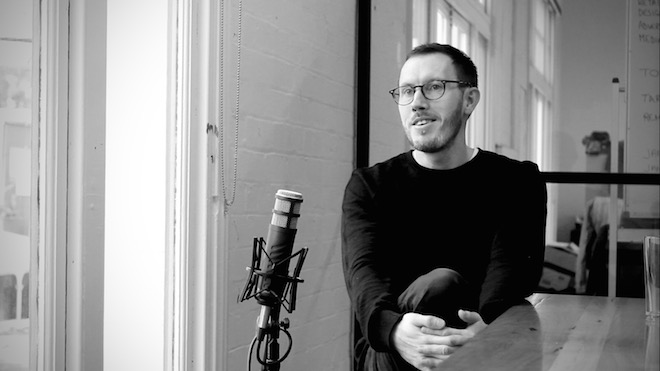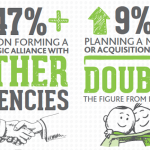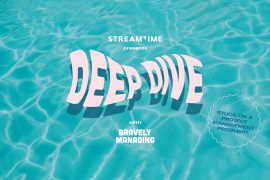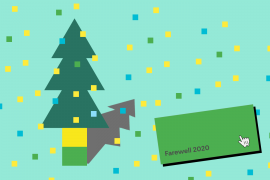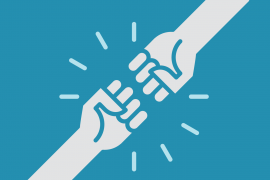
For episode 03 of Streamtime Radio we’re in the studio with the delightful Rhys Gorgol, Creative Director at <strong>Kye:</strong>. We talk about the importance of collaboration, standing behind the value of design and trusting your instinct.
Like this podcast? You can find other insightful episodes on iTunes or at streamtimeradio.simplecast.fm
Alternatively, if you’d prefer to read Luke’s insights, here’s an edited transcript of our conversation.
The TCYK Philosophy
Kye Hush: Tell us, how did The Company You Keep get started?
Rhys Gorgol: TCYK started three and a bit years ago. I had been working at various other studios around town and then freelancing and kind of thought, “Well, now is the time that I really want to do my own thing.” I suppose I really want to create a culture around a studio rather than just do whatever work come our way. But really control, I suppose, the environment and team dynamic. And a huge part of that for me is the people that we choose to work with on a client side. And so that’s kind of how it all came about.
Kye: So when you’re starting out, can you be so picky with the clients that you want to work with or do you have to take what comes and then flitter away the ones that maybe aren’t so good?
Rhys: It’s a bit of a balance. I’m a big believer in having a vision and then following through to that, and so not just necessarily taking things. But at the end of the day you do need to pay your rent, so there’s always a balance of those things. We’ve been really fortunate in that we’ve had some really long-standing relationships with some of our clients, which has afforded us the ability to be able to say “no” here and there and really craft, I suppose, that client roster.
“I’m a big believer in having a vision and then following through to that.”
Kye: That sounds like a nice position to be in. So do you actively go out and seek the clients? Or do they just find you? Or is it a word-of-mouth thing? And what are the kind of clients that you’re attracted to?
Rhys: It’s a mixed of both in terms of actively seeking the clients we choose to partner with, but also having clients find us along the way. I’m always kind of surprised at how it’s not necessarily the sector that someone may be working in that makes a relationship interesting. The glamorous things of fashion or galleries or hospitality they, on face level, feel like the perfect job. But when you actually get into those relationships, they aren’t necessarily as creatively rewarding as you thought on the outside. And then you meet people that might be doing something totally different to anything you thought you’d ever be working in.
Like we’ve worked with a couple that used to own a bottle shop down the road and then sold that and started a maternity bag company. So basically a company that puts all the stuff you need to have in a bag when you go to the hospital to have a baby, and then they sell that because people always forget all the different things that you kind of have to take.
And that is something that I have no experience in nor would have ever considered. They were a great people to work with, they had a huge amount of faith in us. And that sector didn’t really have, I suppose, a lot of that design thinking prevalent in it and it allowed us to have a big impact. Not necessarily within that sector, but within their business and see a real return on investment to them, which is great. It was really rewarding for us, as well.
Kye: How do you go from owning a bottle shop to “I know what we need…”?
Rhys: They’re great. They are definitely not the kind of people you would think would start something like that when you meet them. Troy is a big burly bloke who’s great, who you’d imagine would own a pub or like a bottle shop. But yeah, it’s pretty funny.
Starting the business
Kye: So you were freelancing and then you decided to go out and do your own thing. You’re going from working for someone else and designing, design is the only thing, but now you’re the business owner and you’re responsible for people and paying the bills and things. How does…
Rhys: Yeah, it is tricky. I’ve always been slightly business minded or enjoyed that side of things, not necessarily just the creative side of it. But I’ve always enjoyed, I suppose, the business aspect of things. So recording, invoicing, seeing how it all plugs in, from woe to go. All those sort of different bits and bobs. And, I suppose, it does have those challenges, but I felt like I was seeking those challenges.
“The hardest thing to manage has been moving from a process of being responsible for yourself to having a bigger team and having layers of structure underneath that.”
What I found, I suppose, the hardest thing to manage has been moving, or transitioning, from a process of being responsible for yourself or a smaller team to having a bigger team and having layers of structure underneath that and then managing people within managing other people. And how you can kind of, I suppose, do that in the most efficient way where everyone shares the same visions through all those different layers. But we’re getting there, it’s good.
Kye: I feel like you’re quite unique. Not in your vision of a business, but as a creative that quite enjoys the business side of things.
Rhys: Yes, a lot of people definitely don’t like doing that. It’s funny with our team, as well, because I have quite specific opinions about designers project managing their own projects and being really, really heavily involved. And, I suppose, pushing things forward and understanding the hours that they have to do a job, but also managing the day-to-day with the clients. Because I think that fosters relationships and rapport, which allows the creatives to get inside the heads of the clients more to give more appropriate responses. And cuts down on, I suppose, that Chinese whispers between account management and designers. So yeah, on certain days the design team don’t share my love of the business side of things.
“I have quite specific opinions about designers project managing their own projects and being really, really heavily involved.”
The hiring process
Kye: It’s to be expected. So talking about the type of business that you’re running and the fact that you’re sort of cutting through the account managers sort of stuff and getting the creatives to be involved in that. So when you’re hiring, are you looking for a particular kind of creative? Do you bring that up, that they’re going to be dealing directly with the clients and they’re going to have to project manage their own jobs? How do you go about the hiring process?
Rhys: I suppose I feel that I’m pretty transparent about those things. Not necessarily in a super direct way. But transparency, I suppose, is a recurring theme through the business, and making sure that the design process and the designers are transparent to the client so they can see who’s working on their project and kind of have the dialogue. In terms of hiring, I’m more focused around culture and people, and fit, and wave length. Which is a bit hippie-ish and not necessarily going back to that business side of things, but it is I hire from the gut more so than the head. In those sort of instances people feel right. And if they feel right, they usually are right. And I’ve got it right so far. So yeah, fingers crossed I keep getting it right.
“In terms of hiring, I’m more focused around culture and people, and fit, and wave length.”
Everyone has a design degree, so that’s part of it. We’ve got two people who work in the client services side of things: so Monica, who heads it up, and Anya. And both of them studied design. So everyone has a really solid understanding of design and its role and can talk design regardless of what side of the fence they sit on, whether they are design or a client. But it’s more around wave length and fit, and whether they kind of get things that we get and like the same sort of stuff.
Kye: You can teach people how to do things, but it’s more of the gut feeling, whether they’re going into fit into your culture or not.
Rhys: Exactly. Yeah. You can’t teach that, and it’s this invisible thing that you can’t even necessarily articulate to someone else. You just kind of got to feel it out. But yeah, if you have an eye and you have the basics in design, that’s a skill that can be taught.
Collaboration
Kye: Is collaboration important to you?
Rhys: Totally. That’s why the business is called what it is. I suppose going back to that initial point, our company is about the company that we keep both internally and externally. So collaborators, clients, but also the internal team. It’s all about these relationships. So we collaborate with a whole bunch of people, from printers to architects, to writers, to illustrators. And I really like, I suppose, fostering those relationships, obviously sparking new ones. But it’s great to kind of continue a dialogue with, I suppose, a solid group of creatives that you can sort of really get into a rhythm with.
“Our company is about the company that we keep both internally and externally.”
We’ve done that a few times with Simon and Jenna from Hungry Workshop, who’ve been great to collaborate with on the printing side of things. Going to them and going, “Hey, we’ve got this idea. What are you working on? How does that work with this? What are you thinking of these sorts of things?” And we did that with PDA recently, as well, where we were just working on our new website. We kind of have this rough, loose thing and we were like, “Hey, we’re doing a new website. Here’s some thoughts. What do you think?” and bringing them to the discussion about the design of this thing. It’s really interesting.
Kye: In recent years, collaboration seems to be…
Rhys: The buzz word.
Kye: …the buzz word. But it seems to be working for people. People are realizing that they don’t have to squirrel away their designs and their secrets. If they share them out a little bit they could make them better or learn from other people.
Rhys: Yeah. And what you give out into the world you get back ten fold. So if you don’t give anything out, then you’re going to live in this vacuum that just kind of decomposes, I suppose.
“It’s great to kind of continue a dialogue with a solid group of creatives that you can sort of really get into a rhythm with.”
Kye: And so when you started the company or had this idea of collaboration, how did you go about making your connections? How did you get to work with all these awesome people?
Rhys: A lot of it was initially in any sort of case is your immediate network. So people that you know or people you know know, that kind of one step removed scenario, that you start to build a little bit of work up from and then from there word of mouth kind of grows and you start getting a bit of press and those sorts of things. So definitely it was leveraging my close network, which has been really, really supportive of what I’ve been out to do.
A lot of my immediate friends who we’ve done work with, are business owners that I kind of catch up with as, not necessarily mentors, we just kind of catch up and talk about running businesses and the challenges and the highs and the lows and all that sort of stuff. And a lot of them, from Nick who runs Broadsheet to Michael who runs The Everleigh, which is a bar. They are some of my closest mates and they’re all young business owners in different sectors. Which it’s kind of good to have that support network to not only help spruke your business and what you’re doing, you can do it vice versa, but lend each other’s skills to each other, has been great.
But we have, on another note, gone out and targeted certain people, as well. Like Seven Seeds‘ Mark and Bridget, I’ve had a lot of respect for what those guys have done in terms of the coffee game and how they’ve run their business and have been so committed to their craft. And so I really wanted to work with them. So yeah, we targeted people who are like that to work with, which has been great. Because I knew that they were going to be on a similar wave length before I even engaged in that relationship. So we were kind of setting up that relationship on the front foot to get a great outcome.
“What you give out into the world you get back ten fold.”
Kye: Well, I guess it’s like the hires, it’s the gut feeling.
Rhys: Exactly.
A word of advice
Kye: Do you think it’s easy for designers to branch out on their own these days and start a business? And do you advise that? Or do you think there’s definitely a period of time where they should be getting in there and working in organisations where they can be mentored and then perhaps branching out?
Rhys: I think there’s no right way nor wrong way to do it. There’s businesses out there that have started straight out of university where they haven’t had time in another studio or under another creative director that have been incredibly successful and I have a lot of respect for because I know that I couldn’t do that and it wasn’t for me. Studios like three60 and Büro North and Motherbird that have been extremely successful off their own from day one.
“I really wanted to work under a studio and a creative director that I really, really admired.”
I was freelancing prior to taking a job and decided deliberately to take a job, took a pay cut to take a job. Because I really wanted to work under a studio and a creative director that I really, really admired to build a skill set to further evolve my thinking and my practice and my process. And I’m really grateful that I made that decision because it was the right decision. And it’s definitely played a huge part in, I suppose, being able to talk and articulate design and think about it in the way that I do.
The thing with design and starting businesses straight up is that it’s really cheap to do, so lots of people do it. Because all you need is your computer, which you have probably already got, internet connection, power, and a couple of programs, and all of a sudden I run a business. What people fall in the trap of is, “Do they actually really want to be doing that?”
And that’s what I’d urge people to think about before they just go, “I’m going to start a business,” is what do you want from design and what do you want from your life and to achieve? Because there’s kind of a bit of responsibility with starting a business because if you’re going to enter a professional relationship with your clients, you need to be reliable in there. You can’t just go, “I’m going to start, I’m going to leave that and go do something else.” That’s not necessarily fair on the client relationships that you’re forging.
“What I’d urge people to think about is…what do you want from design and what do you want from your life?”
And, I suppose, making sure that you have a full understanding of what you’re getting into, that business side of things that we went back to before. If you don’t really enjoy that, then you better have a business partner that does enjoy that. Otherwise there’s going to be a whole party of business that’s just kind of floating through.
The value of design
Kye: An experience I’ve had in the past, where I’ve worked at start-ups is the amount to charge a client…
Rhys: The age-old question and the designers’ guilt around that, which I always find really funny. “I’ve got to send you an invoice, I’m sorry.”
Kye: Did you find that when you started out, did you get that guilt or have you been quite clear about the value you’re bringing to the client?
Rhys: I think that’s something that you always get more and more comfortable with. It’s something that, I suppose, I’ve always had it drilled into me, the value of design and standing behind the value of design. And taking a role in educating, I suppose, other sectors around the impact of design and treating that, not necessarily as a cost, but as an investment, and there’s a return on that.
I feel quite comfortable around having those conversations. And I think you have to if you have a business because it’s a commercial entity. In the same way you got to feel comfortable if a printer come to you and says, “This is how much it costs,” and you have to convey that to a client. That’s kind of what makes the world go around. But you have to have the confidence in understanding what you’re doing is actually injecting value into a client’s business.
“If you can have confidence around having those conversations and be transparent about how you got to that figure, people respond to that quite well.”
So if you can kind of stand back as a branding or design agency and go, “Well, what I do injects value and there is a return in our investment and you can see that here, here, and here. Then why would you not be paying me this rate?” We’re quite transparent, as well, about how we build our quotes.
Rightly or wrongly, we base it on hours spent, almost the tradition of design being this trade kind of base thing rather than, I suppose, an executive kind of thing. So in that it doesn’t have this figure that’s pulled out of the air. It’s like, “For you it’s going to be $20 million for your brand.” It’s like, “No. For a brand identity it’s going require a designer for 40 hours. It’s going to require a creative director for ten hours. It’s going to require an account manager for this many hours.” They have an hourly rate and that equals an output.
So if you can, I suppose, have confidence around having those conversations and be transparent about how you got to that figure, people respond to that quite well.
Kye: Would you work for for free?
Rhys: Yeah, totally. We would love to engage in pro bono work with the right client, it’s just a matter of finding the right fit. Being a small business, it’s kind of hard to take those things on, so you can’t take them on willy-nilly. So making sure when you do take it on, it’s the right one. And I think, with that, I’d want to ensure that it was a long-term, ongoing relationship because that’s where I would really be able to inject that value rather than, “Hey, here’s your brand or your postcard, go off into the world.” It’s like, “What are your objectives and how can we meet those objectives?”
What inspires you?
Kye: What inspires you and what do you do to stay inspired?
Rhys: I don’t know what inspires me, to be honest. People? I suppose that’s why I’m so fixated on surrounding myself with people that I like and I think are interesting and I can jive with or have dialogue with, because I suppose that’s where I get that inspiration or that enthusiasm. I don’t necessarily look to any one particular thing, but definitely people and the relationships that they spark.
“I’m so fixated on surrounding myself with people that I like and I think are interesting and I can jive with or have dialogue with, that’s where I get that inspiration.”
I kind of think about myself… I’ve thought about this a little bit sometimes, about why I don’t connect with certain people and why I do connect with certain people. And this is probably really blatantly obvious to other people, but for some reason it didn’t click in my head. But it’s almost like playing tennis.
If someone is on the right wave length and you have a dialogue with them, you’re hitting a ball and they’ll hit it back to you. But when you’re kind of hitting the ball and the other person on the other end just doesn’t get it and doesn’t hit it back, that drains inspiration and energy from you. But as soon as someone’s hitting it back to you and hitting it back harder, you’re like, “Oh, shit, this is great.” And you amp up and everyone amps up. So I suppose that’s what I look for for inspiration, is that kind of dialogue with those people.
Diversity of clients
Kye: How did you end up collaborating with the Broadsheet guys and then the Broadsheet Restaurant?
Rhys: Broadsheet is an interesting one. I have a really close relationship with Nick, the Founder. We’ve been close mates for ages. And even shared a flat together back in the day. And so it was kind of an organic thing to work together. And then since then we’ve moved our separate ways and years go on. I’ve moved in with my partner, but we share an office. We used to share another office. Our team is really, really tight-knit, which is, I suppose, just kind of fell into that. Again, it’s that personal network thing.
The same with Dave, who’s a close mate who we work with. I met him through another mate and he’s introduced us to Schweppes, who we’ve had a really good relationship with. And then that has allowed Schweppes to be introduced to Broadsheet, which means we’ve worked with them together, so it’s kind of this incestuous thing, but this web where you never know where the next job is going to come from or the next opportunity kind of thing.
And so if you just surround yourself with like-minded people, they want to surround themselves with like-minded people. And so you innately kind of meet them, and then that kind of spider-webs out, and spider-webs out, and spider-webs out.
Kye: Someone like Schweppes, that’s a corporate, big name brand. Are people like Schweppes hiring sort of like-minded people that get the business that you were trying to create?
Rhys: Yeah. Again, it’s people. Only because the relationships we have with other people that we work with there. That does that for the creative flexibility to achieve the outcomes that we want to achieve with them. Because we are on the same wave length, that has allowed us to foster trust. It gets to the point where they might come to me with a brief and I’ll be like, “Well, you don’t need that. I’m not going to just take your budget from you because you want that, that’s not actually going to achieve your outcome.”
“I don’t think it’s the size of the client that you’re working with that determines the amount of creative flexibility.”
And so they kind of respect those sorts of things so that when you come to them next time and they’ve got something they don’t have the budget for, and you say, “Well, you really need to invest in this. And this photographer is right, I know they cost more. But you’re going to get the right results with this person and not with this person.” It allows you to achieve those things.
So I don’t necessarily think it’s the size of the client that you’re working with that determines the amount of creative flexibility. In the same way, I don’t think it’s necessarily the sector that that client’s in that determines the amount of creative flexibility we get. It’s about the people that you’re working with. You can do some really creative stuff for some really dry companies, which is infinitely more interesting than doing creative things in an industry that’s so saturated with that sort of stuff.
And we’ve found, colloquially, that some of the smaller operations, the start-ups, are harder to get your thinking across a line because innately there’s a level of personal investment on their behalf that it’s like, “Oh shit, I’ve saved up a lot of money for this thing, it better work, so I’m not going to take the risks.” Whereas someone that has a bigger company that has the ability to sort of build that trust and take that risk with, I suppose, much less barriers allow you to achieve those outcomes with much less selling those sales.
Kye: I guess it’s also that level of trust. And I guess being as transparent as you guys are, it’s probably a lot easier to trust you with that than people that aren’t as transparent.
Rhys: Partially so, yeah. You have to build that. And that’s why, I suppose, we like to work with people that want to foster a partnership with us. It’s a relationship, it’s not a transaction. You’re not coming to TCYK for us to execute your poster or your postcard because I’m going to cost you too much and it’s not going to be how I’m going to inject value in what you do. You’ll come to TCYK and you’re like, “Okay, I’ve got an objective and I’ve got this product, and let’s work together to really find the essence of what it is that makes us tick, and our product or our service tick, and our audience tick and how we can make these things connect in a way that’s interesting and new and brings result.”
“We like to work with people that want to foster a partnership with us. It’s a relationship, it’s not a transaction.”
Kye: Have you ever walked away from a job? Where you’ve taken it on and then you haven’t been on the same wave length and you just know it’s not going to work out?
Rhys: No. I’m too stubborn. “We’ll make this work out. You will like me. We will find a way.” No, I haven’t walked away from anything as yet. But there’s people that run other studios that I’ve worked with that have done things like that, that I have a lot of respect for and admire. And I do think that there’s definitely a time and a place to kind of, not necessarily draw a line in the sand, but to make sure that, I suppose, a relationship is right for both partners and again, it’s a partnership, it’s not a transaction. So being true to that.
If you feel like, “Hey, we aren’t the right people to get these results for you,” then you need to kind of be open to that. But I’ve always felt that there’s always a way we can work with our client to achieve a really good outcome, whether it’s the easiest process or not so easy, is up in the air.
Best piece of advice
Kye: What’s the best piece of advice you’ve ever been given?
“If it wasn’t fun, we didn’t do it.”
Rhys: I could be waiting for it. It’s not necessarily advice, and “mantra” is not necessarily a word I really want to associate myself with. But I read this thing the other…not the other day, but a few months ago. I forget where I saw it, but it said, “If it wasn’t fun, we didn’t do it.” And that kind of has resonated with me. It’s always kind of gone through my head since then. It’s like if you enjoy doing it, you’re going to do a good job. And if you enjoy working with people, then it’s going to be a good outcome. So that, I suppose, is not necessarily a bit of advice, but I suppose something that’s rattling around up here.
Kye: I like that. On that note, thank you very much for having us in your studio today.
Rhys: Thank you. Cheers.


